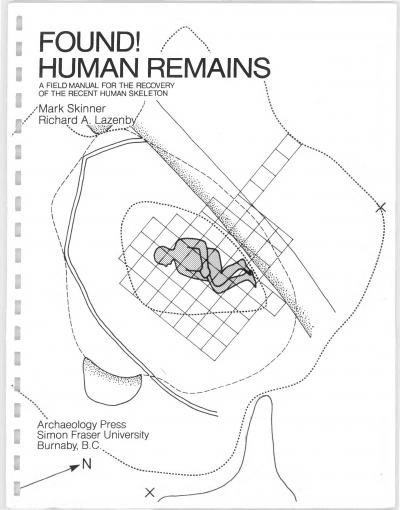Found! Human Remains: A Field Manual for the Recovery of the Recent Human Skeleton
Keywords:
Archaeology, Field manual, Human remains, Forensic anthropology, Prehistoric human remainsSynopsis
For more than a century archaeologists and physical anthropologists have been engaged in the recovery and analysis of ancient human skeletons and artifacts, in order to understand the appearance and behaviour of past peoples. Their aim, maximum information retrieval, parallels that of the police officer confronted with recent bones which might be human and possibly of forensic significance. The methods employed by archaeologists and physical anthropologists, both in the field and in the laboratory, are of immediate and obvious use to the investigating officer. Unfortunately, a gap in communication and cooperation persists between the police and the academic, to the disadvantage of both. The investigation of suspected crime can be significantly enhanced by application of the techniques of archaeological excavation. Similarly, physical anthropologists, with skills freshly honed by investigations leading to the identification of missing individuals, can turn to prehistoric and fossil bones with heightened confidence in their ability to do creditable work. A positively identified skeleton is a touchstone with reality for physical anthropologists who normally work with prehistoric bones which, sadly, cannot talk back. This manual describes how to recover more or less skeletonized human remains and associated evidence for forensic purposes. It also explains what a forensic anthropologist can learn about an individual from a careful study of the bones. The authors hope the manual will bring the identification officer in the field and the archaeologist and physical anthropologist closer together. Although the manual will enable the investigating officer to recover human skeletal material adequately, it is our recommendation that, with enhanced cooperation between the law officer and the forensic anthropologist trained in archaeological techniques, they share the task of recovering the bones and related evidence. Only experience in the use of this manual will show if it is helpful. In the spirit of closer communication the authors welcome any and all suggestions for its improvement.
Chapters
-
Frontmatter
-
Complete Book
-
Contents
-
List of Figures
-
List of Tables
-
Preface
-
Acknowledgements
-
Chapter I Forensic Evidence and the Human Skeleton
-
Chapter II The Recovery of Human Remains and Associated Evidence
-
Chapter III Identification and Individualization
-
Chapter IV Manner and Cause of Death
-
Chapter V Elapsed Time Since DeathContextual Evidence for Interpretation of Postmortem Events
-
Chapter VI The Investigative Role of the Forensic Anthropologist and Archaeologist
-
Chapter VII Protocol for the Transfer of Human Remains
-
Appendix 1 Resource Personnel in Human Remains Identification
-
Appendix 2 Equipment and Materials for the Recovery of Human Remains
-
Appendix 3 Human Remains Field Recovery Form
-
Appendix 4 Killing Bottle and Rearing Container for Insect Remains
-
Glossary
-
References and Recommended Reading
-
Illustrations of the Human Skeleton
-
Errata
-
Backmatter
Downloads

